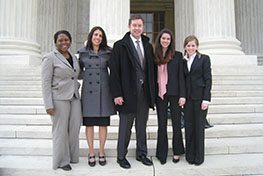Fast answer to the above-posed headline question: No, they do not.
The seat belt that most drivers throughout California and across the United States are of course most accustomed to is the same one that dad, mom and perhaps even the grandparents used many years back (with some modifications).
That is, the quintessential and long-tenured American seat belt has some give to it as a vehicle occupant is lurching forward, but only to a point. At that point, the belt stops a driver or passenger being propelled forward — suddenly and completely.
There can be an occasional trade off with that, of course, with the good-news, bad-news scenario being one that most motorists are likely quite happy to live with (quite literally).
The bad news: Persons using the restraint can sometimes suffer material injuries to their chest area and ribs, even breaking the latter.
The good news: Those ribs might hurt, but the fact that a driver or passenger stopped hurtling forward at a given point likely stopped — as it does in many vehicle accidents each year — a body from colliding with a vehicle’s windshield.
Relatively new technology is now featured in some vehicles that contrasts with that employed in what might be termed the “classic” seat belt. So-called “spool out” belts allow for the continuous forward movement of a vehicle occupant, without a finite and sudden stop point, the intent being that an air bag will timely employ to intercept the forward-moving body.
“The seat belt actually gives you up to what’s supposed to be a waiting air bag,” says one commentator.
That is of course ideal — when it works. When the timing isn’t perfect, though, the implications for serious and even fatal seat belt-related accident outcomes are crystal clear.
Reportedly, at least a score of lawsuits have been filed in recent years alleging that injuries were caused by spool-out belts.
Source: NBC Los Angeles, “Seat belt technology designed to improve safety blamed for some severe injuries,” Amy Corral and Randy Mac, July 1, 2015











